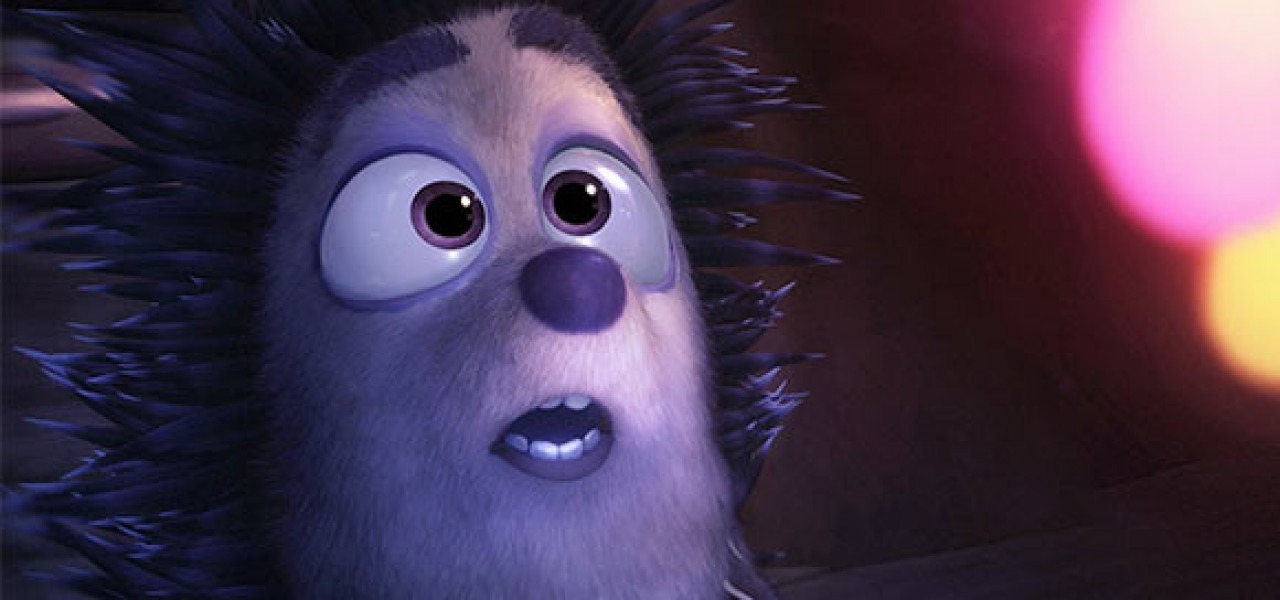
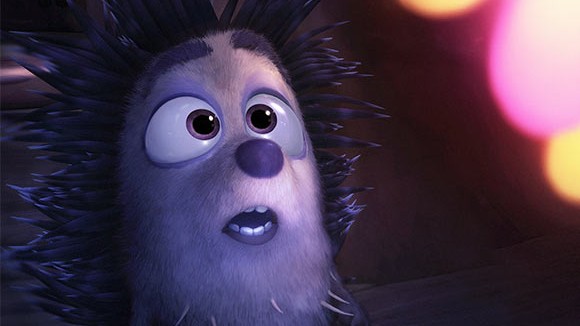
Oculus Debuts ‘Henry,’ An Immersive Virtual Reality Short
On the surface, Oculus Story Studio’s new 12-minute short film Henry is a sweet story about a lovable hedgehog who just want to make friends, but can’t stop spiking whatever he hugs.
But dig beneath that surface, and you find a world of promising possibility, hampered only by the frontiers of virtual reality technology and filmmaking. From its multilevel interiors to its moving parts — which includes not just the adorable Henry, but a flying pack of balloon puppies, a splattering birthday cake, a cute ladybug and much more — Henry is a pioneering VR experiment pushing the envelope of storytelling, however slightly.
“Even though we see the potential, we still have so much holding us back simply because the hardware is not fast enough,” Oculus Story Studio creative director Saschka Unseld, director of Pixar’s The Blue Umbrella, told Cartoon Brew yesterday at a media-only unveiling at a lavish Beverly Hills mansion high above smoggy Los Angeles. “We can’t do things we really want to try, and because this is only our second film we are finding that the more we do them, the more we feel like we’re in film school again.”
 SEE ALSO: Oculus Creative Director Saschka Unseld: “It Feels Like We’re in Film School Again”
SEE ALSO: Oculus Creative Director Saschka Unseld: “It Feels Like We’re in Film School Again”
Oculus’ first short Lost, while an open-hearted homage to Brad Bird’s timeless 2D/CGI classic The Iron Giant, was also an object lesson in how to make, and not to make, a VR film. Its giant robotic hand, searching through a darkened forest in search of the rest of its body, was quite impressive, especially for fans of The Iron Giant, but it all still happened in front of the viewer, stuck within a frame that is more properly the domain of traditional cinema. Unseld and Oculus Story Studio technical director Max Planck, a 10-year veteran of Pixar, told Cartoon Brew they wanted Henry, directed by Brave and Cars 2 animator Ramiro Lopez Dau, to exist instead in a 360-degree sensorium, while still focusing on an endearing character who acknowledges and even waves at the viewer.
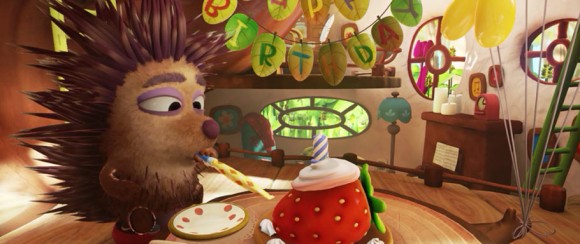
“Lost was very cool, but it was a two-sentence story,” said Planck, a distant descendant of the Nobel-winning physicist of the same name. “Henry is much more complex.”
Viewers can manipulate their viewing of Henry by standing or sitting, peering up and down the hedgehog’s stairs and through his doors to witness the objects beyond the short’s main character, who sometimes exists at the periphery of the screening. While Henry the hedgehog is a sweet character, it can be hard to focus on him when there is so much rich content and rendering to explore. The desire to adjust your position and attention to enrich your personal experience gives the receptor much more power in how to experience the short. When lonely Henry’s spiny, hollow hairs explode a balloon puppy or demolish his birthday cake, it’s easy to forget about him as you move around to take in all of the scattered data, a process sometimes complicated by the Rift’s headset cable.
Indeed, the wireless Oculus Rift can’t come soon enough. But in its totality, Henry is a significant improvement over the already intriguing Lost, as well as an indicator of VR things to come.
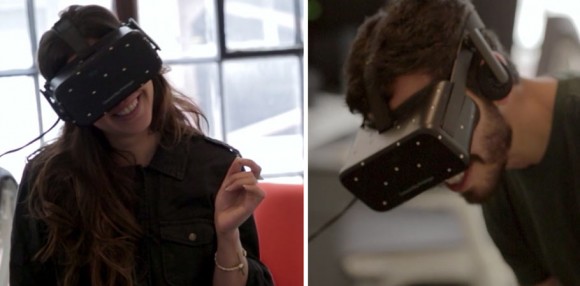
“The reason film works is that the director perfectly frames the moment,” Planck told Cartoon Brew. “The director wants you to see this, now, for this many seconds — and now we’re giving that up. Saschka calls it ‘The Letting Go,’ but it’s OK that people are looking around. It is their choice.”
Making experiential choices is indeed what makes VR films dramatically more exciting than traditional film, where those choices are already made for you, whether you like it or not. Unseld says that Oculus is experimenting with greater interactivity, where viewers can become more deeply involved in manipulating the objects within the experience. But both directors, as well as the entire Oculus presentation, was imbued with a sense that all of this is pretty new, and that those who watched Henry were learning how to experience VR films as much as the filmmakers were learning how to create them.
 SEE ALSO: Oculus TD Max Planck Interview: “We Want to Inspire the VR Citizen Kane”
SEE ALSO: Oculus TD Max Planck Interview: “We Want to Inspire the VR Citizen Kane”
“There is always this mixture of loving the process of making VR film, while realizing how little we actually know and can do about it,” said Unseld. “Something that we learned from Lost is that we should give viewers some space in the beginning, to get settled and look around a bit.”
But the learning curve continues on VR film, and no matter how deep it gets, Oculus clearly knows it is at the frontier, a point hammered home during its presentation featuring famous clips from the films of Georges Méliès, Buster Keaton, Charlie Chaplin, and other icons of cinema’s explosive birth. Oculus understands that it is in quite new territory, certain to be overtaken by more confident and complete visions of VR film following its pathbreaking footsteps. But it is still aiming to sequence VR cinema’s genes for the interactive auteurs to come.
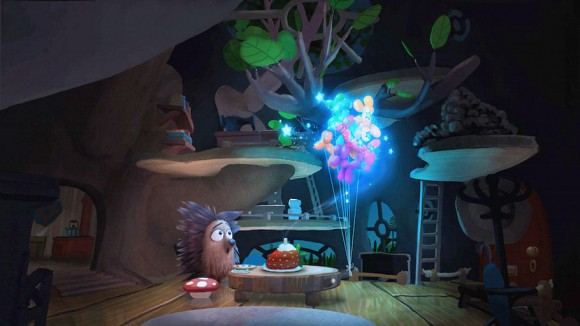
“Today’s filmmakers are amazing because they grew up watching Spielberg and other directors, so tomorrow’s VR filmmakers are just going to destroy us,” Planck predicted. “So we want to be the Méliès of VR who sets the stage for someone to come along and make Citizen Kane, so to speak. We might not make the VR Citizen Kane ourselves, but we want to inspire it.”
Henry will be available for public viewing when the commercial version of the Oculus Rift hedset is released in early-2016.

.png)